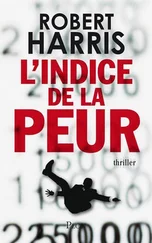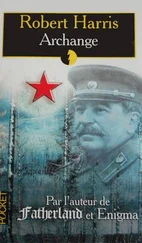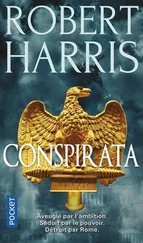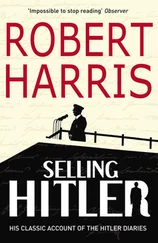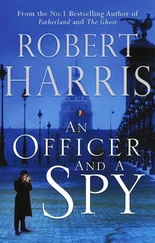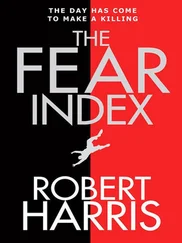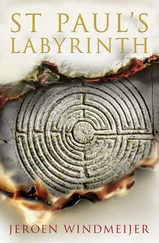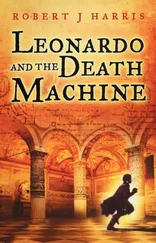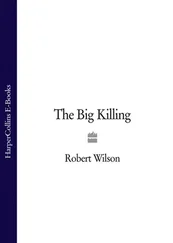26 – Summary of Project OFTEN , 29 May 1973.
27 – William Colby and Peter Forbath, Honorable Men – My Life in the CIA (New York, 1978), p. 442. In an interview with one of the authors in May 1978, Colby claimed that all the allegations of CIA assassination plots ‘really involve only one case – Fidel Castro’, and there he admitted that the CIA did plan a murder.
28 – ‘Unauthorised Storage of Toxic Agents’, hearings before US Senate Intelligence Committee (16, 17, 18 September 1975) p. 10. Chaired by Senator Frank Church, it was known as the Church Committee.
29 – Ibid ., p. 161.
30 – Memorandum for the Record. Discussions with [deleted] on MKNAOMI (September 1975), pp. 3–4.
31 – Memo from unidentified CIA officer to unidentified Chief of Division, 7 February 1962.
32 – Report to US House of Representatives, quoted in Robin Clarke, We All Fall Down (London, 1968).
33 – Dr Edward Schantz, who worked at Fort Detrick for twenty-eight years, in testimony to the Church Committee, Church, op. cit., p. 153.
34 – Although there is nothing necessarily sinister in the connection between an animal health laboratory and a biological warfare establishment, suspicion could only increase when, asked about the nature of the Shellfish Toxin research at Babraham, the Minister responsible would say only that ‘the work has been of value in demonstrating the correlation between certain physiological activities’ (Neil McFarland, Hansard, 14 January 1980).
35 – Charles A. Senseny, testimony to Church Committee, Church, op. cit ., p. 162. Senseny had begun work in the Fort Detrick Special Operations Division in 1953, where he had carried out many experiments with Shellfish poison, refined dart guns, and devised methods of forcing biological agents into public water supplies.
36 – According to a report in Newsday in January 1977, not all CIA anti-Cuba biological operations failed. The paper quoted an unidentified intelligence source as saying that in early 1971 he had been given a container of virus for shipment to Cuba. Six weeks later the island reported the only outbreak of African Swine Fever in the Western hemisophere. Over 500,000 pigs, considered vital to the national economy, were slaughtered. The CIA had no comment to make on the allegation. Newsday , 9 January 1977.
37 – ‘Alleged Assassination Plots Involving Foreign Leaders’, Interim Report of the Church Committee, pp. 20–1. Gottlieb gave evidence under the pseudonym ‘Victor Scheider’. Further information from authors’ interview with former CIA officer John Stockwell in May 1978.
38 – Philip Agee, Inside the Company – CIA Diary (New York, 1975), p. 85.
39 – Information from Fort Detrick employee.
40 – Unauthorised Storage of Toxic Agents – Church, op. cit ., pp. 103–104.
CHAPTER TEN: FROM DISARMAMENT TO REARMAMENT
1 – Quoted in First Tuesday , NBC News, 1 May 1973.
2 – Convention on the Prohibition of the Development, Production and Stockpiling of Bacteriological (Biological) and Toxin Weapons and on their Destruction , signed in Washington, London and Moscow, 10 April 1971.
3 – Boston Globe , 28 September 1975.
4 – Jack Anderson’s syndicated column, 27 December 1975, Nicholas Wade, who investigated these two allegations for Science , concluded that there was ‘little evidence to suppose that the Sovier Union is in legal violation of the Biological Weapons Convention’ ( Science , 2 April 1976). The slighted Soviet diplomat told Science that ‘Anderson can say what he likes, this is a free country.’
5 – Reuters dispatch, Brussels, 30 January 1978. Tass later described the story as a product of the ‘British misinformation department’.
6 – New York Times , 5 June 1978.
7 – San Francisco Examiner , 22 October 1979. The Polish army captain was said to have told American diplomats that he had heard of the plan while imprisoned in the Gulag Archipelago in 1976. A counter-allegation was made by Fidel Castro in July 1981, when he claimed that an outbreak of dengue which had killed 113 Cubans and infected a further 270,000 was the work of the CIA (speech at Victoria de las Tunas, Cuba, 27 July 1981).
8 – Now !, 26 October 1979.
9 – This connection was first noted by Zhores Medvedev in New Scientist , 31 July 1980.
10 – Daily Telegraph , 11 February 1980.
11 – Bild Zeitung , 13 February 1980.
12 – For example, Washington Star , 19 March 1980; ‘US Believes Soviet Anthrax Killed 200–300’.
13 – For example, Zhotes Medvedev, New Scientist , 31 July 1980; Vivian Wyatt, New Scientist , 4 September 1980.
14 – Quoted in New Scientist , 10 July 1980.
15 – Pentagon spokesman to the authors, December 1980.
16 – Authors’ correspondence with Porton Down, March 1981.
17 – The laboratory had been used by the Department of Health for the manufacture of anthrax vaccine.
18 – Authors’ interview with Dr Rex Watson, 21 July 1981.
19 – Authors’ interview with Professor Adolf Henning Frucht, Berlin, April 1980.
20 – ‘Chemische Waffen in Warschauer Pakt’, Soldat und Technik (1970).
21 – Professor John Erickson, ‘Soviet Chemical Warfare Capabilities’ (Department of Defence Studies Edinburgh University, 1978), p. 17.
22 – Correspondence from Ministry of Defence to the authors, April 1980.
23 – The service personnel are said to be all volunteers. In the early 1970s they were recruited through approaches from Porton Down to regimental officers, and through advertisements in service magazines. By way of inducement the volunteers were offered extra pay – some opted for the work at Porton to earn money for holidays and Christmas presents. A volunteer in similar experiments at Edgewood Arsenal in 1969 said ‘My folks think I’m insane, but they tell us there’s no real danger.’
24 – All soldiers are expected to carry an ‘autoject’ mechanical syringe to inject themselves, should they be exposed to nerve gas. The unpopularity of CBW training can perhaps be guessed at – soldiers are expected to enter a room filled with CS gas, remove their gas mask, and repeat their name, rank and number to the satisfaction of the NCO in command. But full-scale training exercises, among the most thorough in NATO, can be rendered unrealistic by the instruction to return ‘noddy’ suits in ‘good as new’ condition: soldiers wishing to eat or relieve themselves must expose themselves to an atmosphere theoretically filled with nerve gas.
25 – Testimony to NATO subcommittee of House Armed Services Committee, 18 and 19 December 1979.
26 – Correspondence from Pentagon to authors, November 1980.
27 – The United States wanted the convention to include ‘incapacitants and dangerous irritants, but not safe irritants or anti-plant chemicals’. For a fuller account of the negotiations see ‘Negotiations On Chemical Warfare Control’, Arms Control Vol. 1. No. 1 (May 1980).
28 – Charles H. Bay, ‘The Other Gas Crisis – Chemical Weapons’, Parameters, Journal of the Army War College , September 1979. Colonel Bay was Commander of Dugway Proving Ground, Utah, at the time he wrote the article.
29 – ‘Auch Kampstoff – Rustung der Sowjets’, Soldat und Technik (1968).
30 – United States Military Posture for FY 1976.
31 – Conversation with the authors, April 1980.
32 – Matthew Messelson and Julian Perry Robinson, ‘Chemical Warfare and Chemical Disarmament’, Scientific American , April 1980.
Читать дальше

